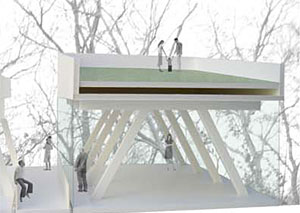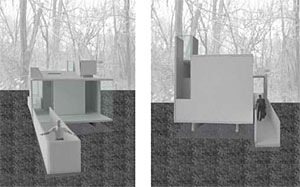In 1855, a band of French socialists, many of them artists and craftsmen, established a utopian community called La Reunion in Dallas, just west of downtown. They were inspired by the writings of philosopher Charles Fourier, who had nothing helpful to say about Texas weather, Texas soil, or Texans generally. Within four years the community failed and its members scattered.


Images courtesy La Reunion TX
Now, a fledgling Dallas arts organization, La Reunion TX, is trying to revive a piece of that earlier experiment through a design competition for an artists’ colony near the original settlement. It attracted 68 entries from 17 countries, including England, Germany, Japan, Brazil, and Bangladesh. The $5,000 first prize, announced in late March, went to Bang Dang, of Dallas-based Cunningham Architects. Michael Pannacci, of Brooklyn, Ontario, took second place, while Ines Fernandez and Lucia Perez, of Madrid, Spain, won third. Sofia Fernandes and Tiago Carvalho, of Rotterdam, won the $1,500 prize for sustainability, a key part of the brief.
The program called for studios, apartments, classrooms, and performance space tucked into 35 acres donated by a Dallas couple. The site is wooded and rolling, and provides many opportunities for creative seclusion. “Our goal is to bring artists from around the world to work in Dallas,” explains the organization’s executive director, Sarah Jane Semrad, “but also to give back to the city through education, collaboration, and outreach.” These residencies could range from a week to a year, and ideally be fully subsidized.
The winning scheme consists of a multi-purpose building that incorporates the remains of a concrete train trestle, and a series of spare studios and studio apartments set delicately into the landscape, with only their piers touching the ground. This restraint was decisive for jurors. “Most tried to do too much,” says Dallas-based architect Max Levy, “but this one is all about withdrawing from distraction in order to draw closer to your work.”
While none of the winning schemes is likely to be built as proposed, La Reunion TX is committed to incorporating the best ideas into the final design, which could cost between $8 million and $10 million. “For a young organization it’s amazing what they’ve accomplished,” says competition advisor Mark Gunderson. “They’ve got a beautiful site and some money in the bank. It won’t be long before they do something.”


Post a comment to this article
Report Abusive Comment